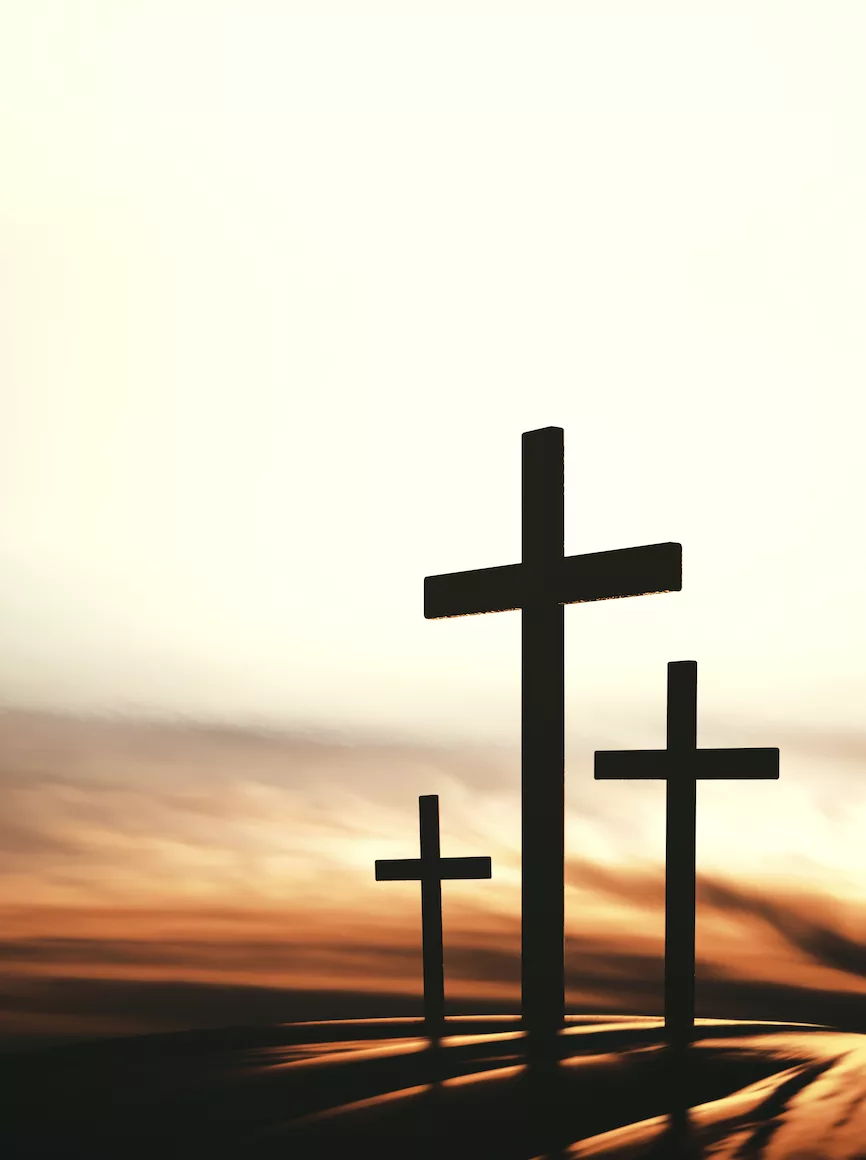
By The Rev. Marek P. Zabriskie
I fell in love with the Gospel of Luke while living in Paris on $3 a day after graduating from college in 1982. Before I moved to France, my college mentor gave me a small book with the four gospels and the book of Acts in French. I read it every day.
The French philosopher Ernst Renan called Luke’s Gospel “The most beautiful book in the world.” I agree. The Gospel of Luke was the third gospel to be written, after Mark and Matthew were written and before John was composed.
Luke probably wrote his gospel between 75-85 A.D., after the Roman armies had surrounded Jerusalem and destroyed the Temple in 72 A.D. Christians were now being persecuted, and a strong Christian community was located in Rome. St. Paul had planted his churches, composed his letters, and had been executed in 63 A.D. – at least 12 years before Luke set pen to parchment.
Luke probably addressed it to a Christian audience, whereas Matthew addressed a Jewish audience. John addressed a Greek audience steeped in philosophy. Luke wrote to sophisticated readers and was better educated than most of the writers of the New Testament
He is the only Gentile (non-Jewish) author in the New Testament and was said to have been a physician. He used the finest Greek found in the New Testament and some specific medical terminology found nowhere else.
Luke is believed to have been Paul’s companion in prison in Caesarea for two years near the end of Paul’s life. This would have given them great amounts of time to talk together. In II Timothy, we read that Luke was the last to be with Paul in Rome before he was taken from his cell in Rome and executed outside the city walls of Rome.
Luke begins by dating from the reigning Roman emperor. He is less focused than Matthew on interpreting Jesus’ life as the fulfillment of Jewish prophecy. Hence, Luke seldom quotes the Old Testament and never uses the term Rabbi, but always uses the Greek word “Master.”
Luke’s Gospel is the first part of a two part work – the Gospel of Luke and the Acts of the Apostles. Together, these two books comprise 28% of the New Testament. By classical standards Luke/Acts is short, but by New Testament standards it is the longest work in the New Testament. It has 52 chapters and takes up one quarter of the New Testament.
Both Luke and Acts are addressed to a Gentile named “Theophilus,” who may have been a high Roman government official or perhaps a Roman leader who Luke was teaching or trying to convert. Many believe that he was Luke’s patron. “Theophilus” in Greek means “lover of God.” Hence, he may signify anyone who loves or is interested in God.
There is a mountain motif in Luke/Acts. Luke is the journey from Galilee up to Jerusalem, which is located at an elevation of 2,474 feet and culminates with Jesus’ crucifixion and resurrection atop Mt. Calvary in Jerusalem.
The book of Acts is the story of the Apostles’ journey down the mountain to carry the gospel around the world. Acts is our best account of the Early Church. It ends with Paul in Rome, where he wrote his famous Letter to the Romans, which is the next book in the Bible after Acts.
Luke fills in gaps about Jesus’ birth and childhood that are omitted by the other evangelists – Matthew, Mark, and John and he tells us more about Jesus’ resurrection appearances than anyone else (Luke 24-1-53). He, therefore, paints a more “complete picture” of Jesus. Luke’s narrative covers a span of sixty years of history. The initial impression is one of completeness and continuity. No one else captures as much of the story as Luke.
Luke was a great story teller. He told short vignettes with great artistry. He painted with words, which is why the Dutch painter Rembrandt called Luke his favorite gospel due to Luke’s “visual stories.”
Luke also has Jesus tell more parables than any other evangelist – 24 parables in all. He alone has Jesus tell the parable of the Good Samaritan, the Unjust Judge and the Prodigal Son – three of the most beloved parables of all time. Luke is not verbose. He writes sparingly in a simple, straight forward style. The wonderful quality of these parables is not their length but their artistry.
Although he never personally met Jesus, he tells us that like a journalist he interviewed many eyewitnesses who knew Jesus. Paul may have introduced Luke to the great figures of the Early Church. Luke reportedly interviewed the Virgin Mary and painted her portrait, which is the Black Madonna, which resides in Czestochowa, the great Polish pilgrimage site.
Luke was also a historian, who set out to write an “orderly account” of what took place in Jesus’ life. Therefore he inserts historical dates and names to anchor his story. When Luke introduces John the Baptist, he uses no fewer than six contemporary dates to fix John the Baptist in time. “In the fifteenth year of the reign of Tiberius Caesar (1), Pontius Pilate being governor of Judaea (2), Herod being tetrarch of Galilee (3), and his brother Philip being tetrarch of the region of Ituraea and Trachonitis (4), and Lysanias tetrarch of Abilene (5) in the high priesthood of Annas and Caiaphas (6), the word of God came to John.” (Luke 3:1-2)
This gospel is often called the “Gospel of the Holy Spirit” because the Holy Spirit appears as the protagonist or the key actor in this gospel.
Luke also portrays Jesus as a great healer. Here we have Luke, who reportedly was a physician, writing about the greatest healer in all of history. Luke captures more healing stories than any other evangelist.
His is the inclusive and universal gospel. Christ is a man for all persons. When tracing Jesus’ genealogy, Matthew traces Jesus back to Abraham, but Luke traces him back to Adam as the founder of the human race.
Above all Jesus is seen as friends of outcasts and sinners. Luke depicts Jesus constantly breaking social boundaries, reaching out to lepers, Gentiles, Samaritans, women, and the poor. Luke alone makes a despised Samaritan the hero of one of his parables and gives roles to people who were normally invisible or forgotten in society.
Luke highlighted the role that women played and showed how inclusive Jesus’ message was. The birth narrative of Jesus is told from Mary’s point of view. He tells us about Elizabeth, Anna, the widow of Nain, Martha, Mary, and Mary Magdalene. He also reveals Jesus’ great gift for healing and his preferential treatment for the poor.
He captures a compassionate Jesus, who offers preferential treatment for the poor. When Joseph and Mary bring their offering to the temple for Mary’s purification it is the offering of the poor (two turtledoves).
In Matthew’s Beatitudes (5:3) Jesus says, “Blessed are the poor in spirit.” In Luke’s Sermon on the Plain, Jesus merely says, “Blessed are the poor.” The Greek word that he uses, “ptokos,” signifies “the poorest of the poor.”
If it were on Broadway, it would be a musical for it is full of praise music. Mary sings her Magnificat (1:46-55), Zechariah his Benedictus (1:68-79), Simeon his Nunc Dimittis (2:29-32), and the angels theirs Gloria in excelsis Deo
Finally, Luke portrays Jesus as the ultimate man of prayer. Before each great event in his life, Jesus prayed. At his baptism (3:21), before he began healing, before he first collided with the Pharisees (5:16), and before delivered his Sermon on the Plain (6:12-38), Jesus prayed.
Before choosing the twelve disciples (6:12), questioning the disciples concerning who he was, before the first prediction of his death (9:18), on the Mount of Transfiguration (9:29), as he hung upon the cross (23:46), and as Peter faced his hour of testing (22:32), Jesus prayed.
If you’re looking for a great book to read in Lent, look no further than the Gospel of Luke. It will richly reward you.
The Rev. Marek P. Zabriskie, is Rector of Christ Church in Greenwich, an author, editor of The Bible Challenge series, founder and executive director of the Center for Biblical Studies. He loves time with his wife and daughters, walking his Corgi, fly fishing, tennis, travel, walking caminos in Europe, studying languages, and sharing God’s Word.


